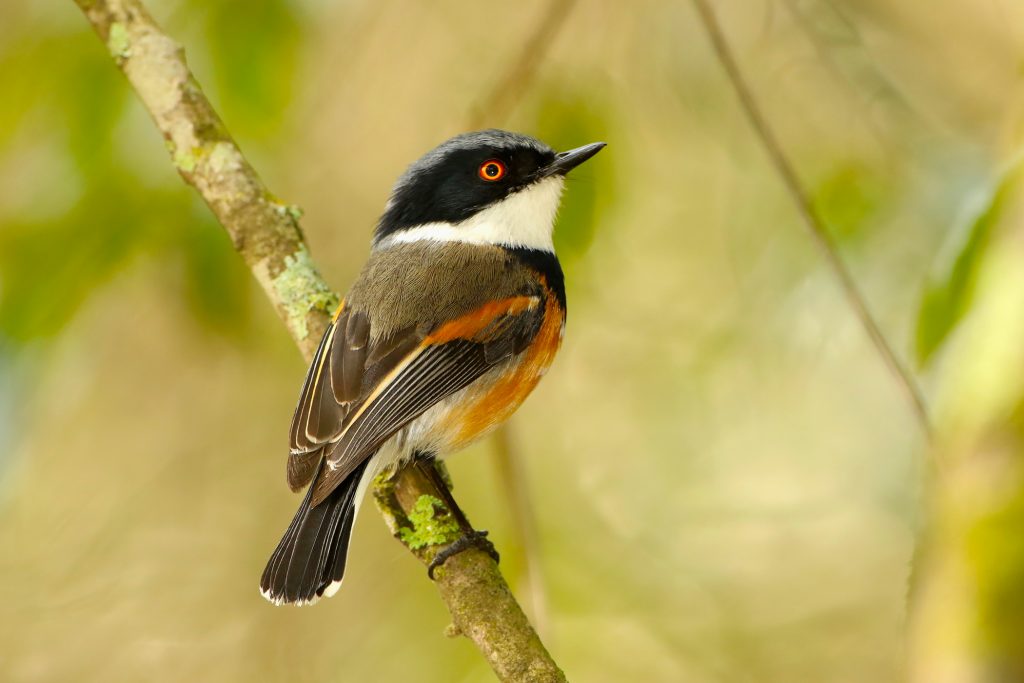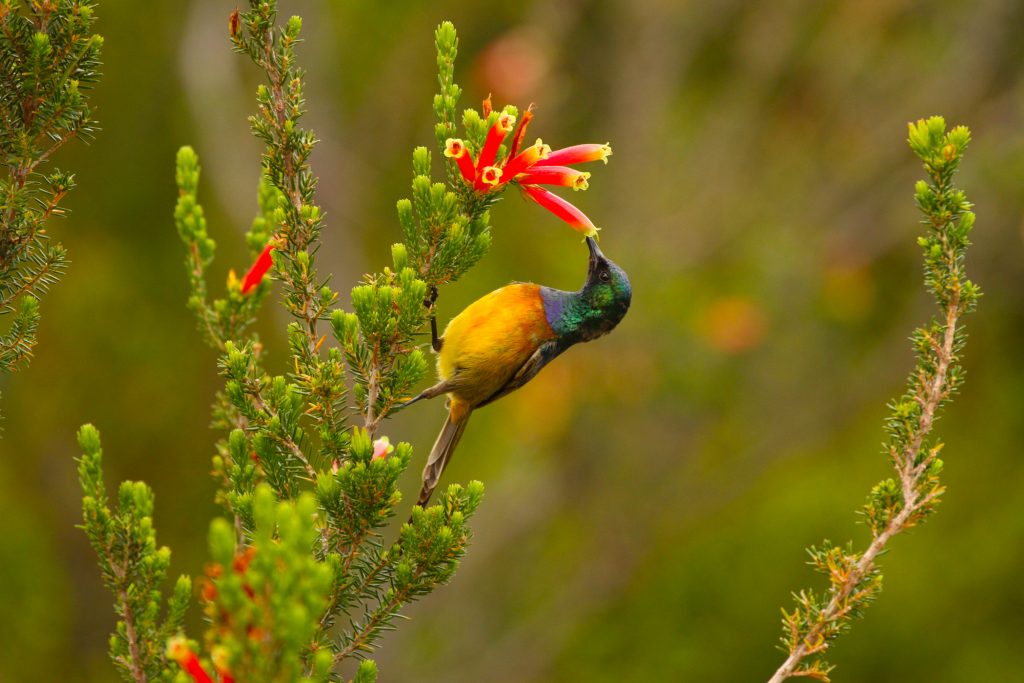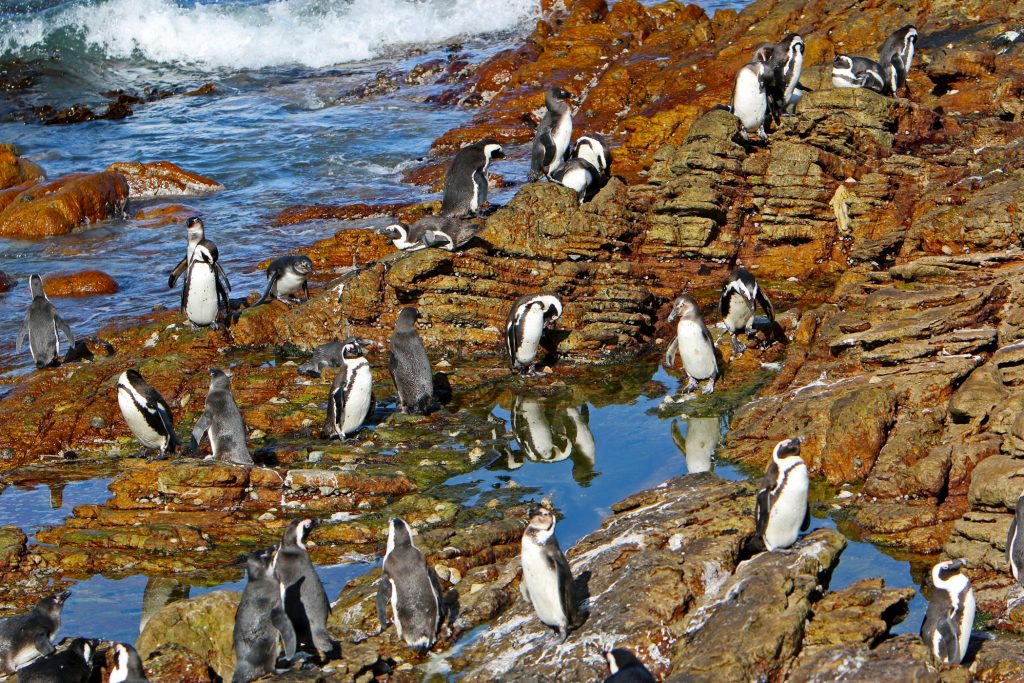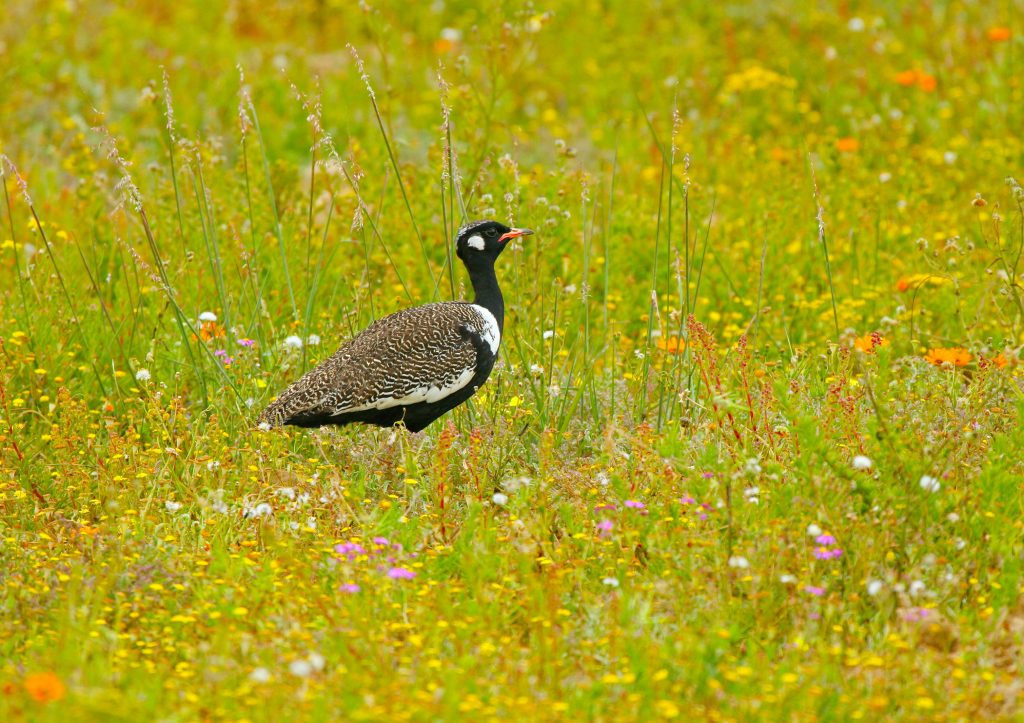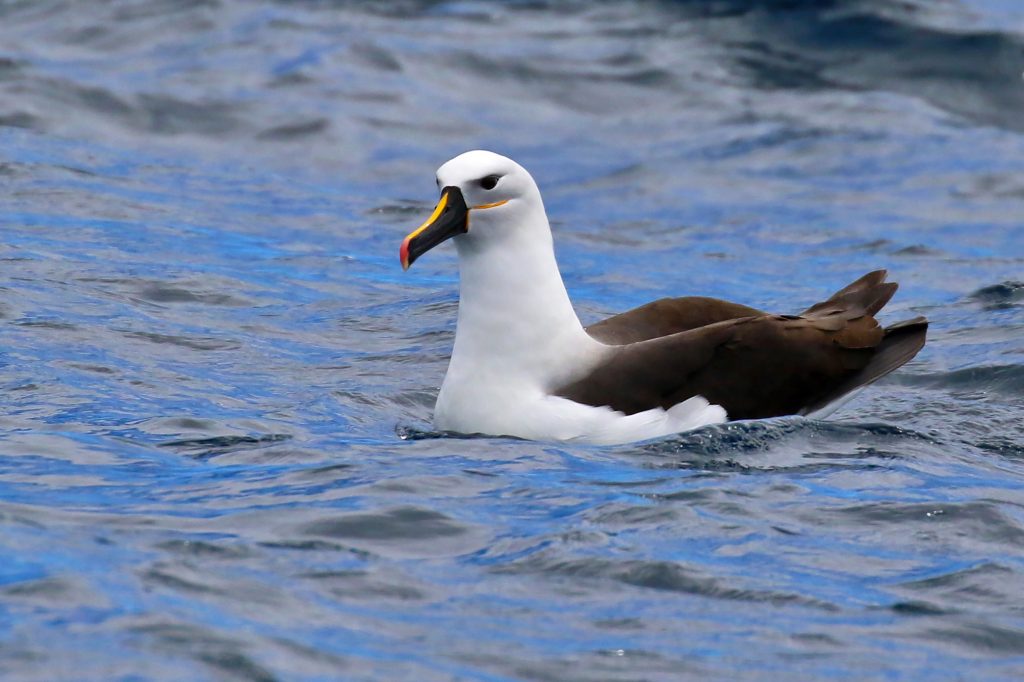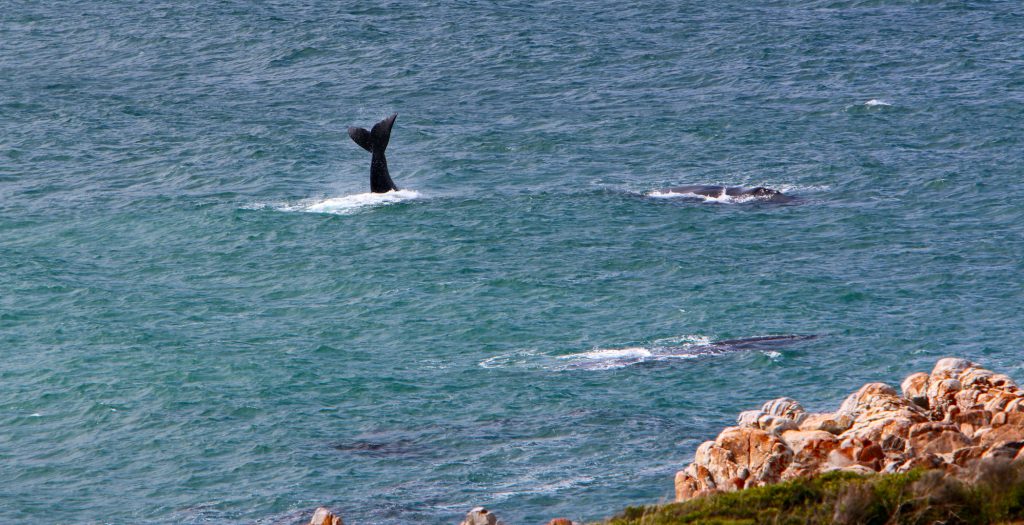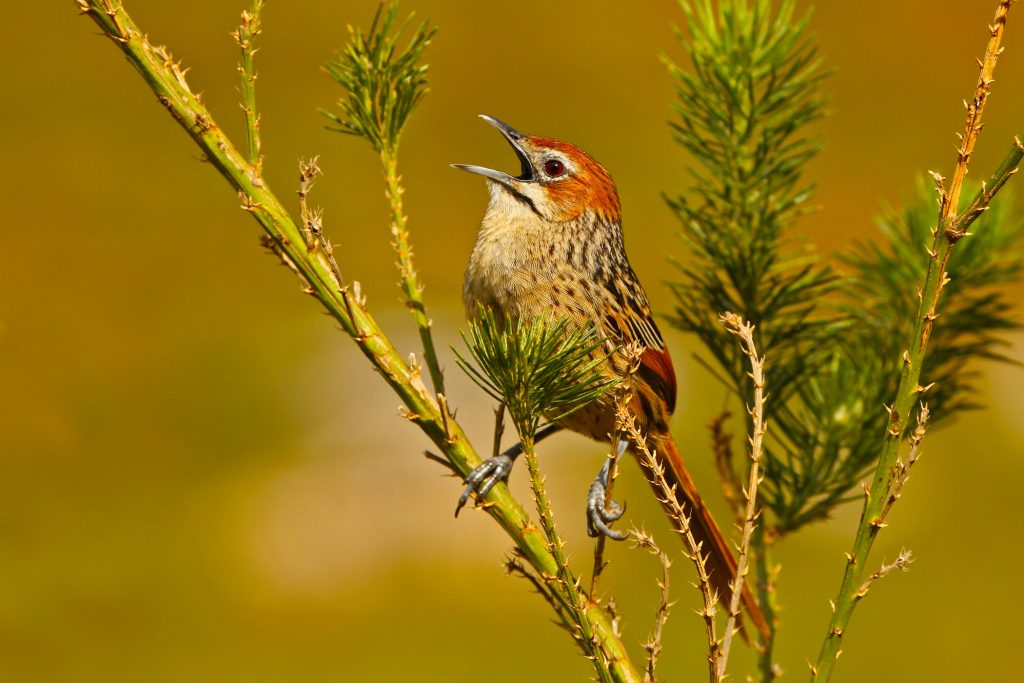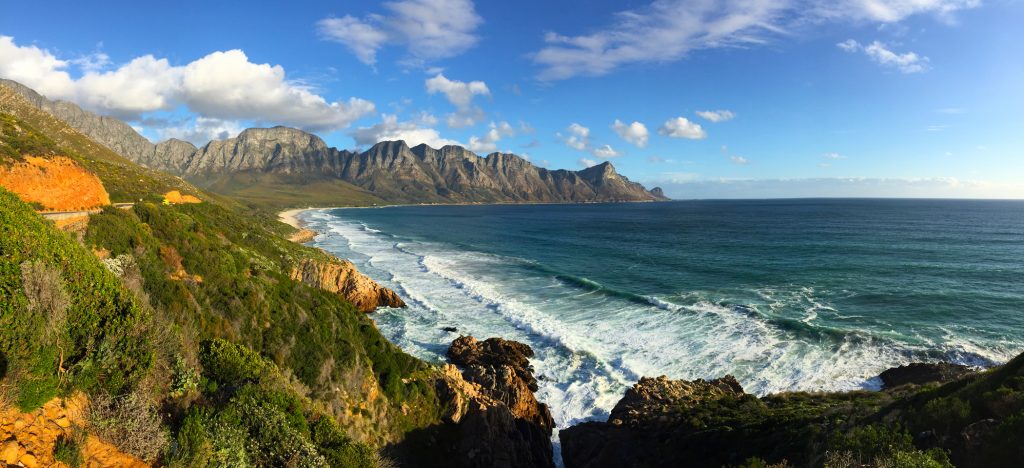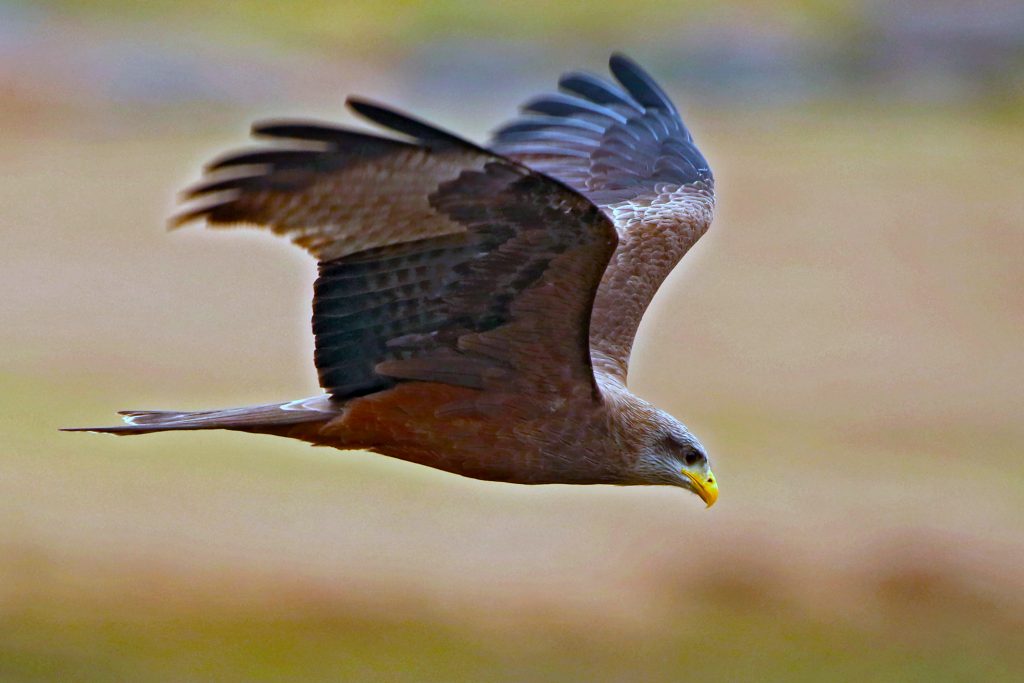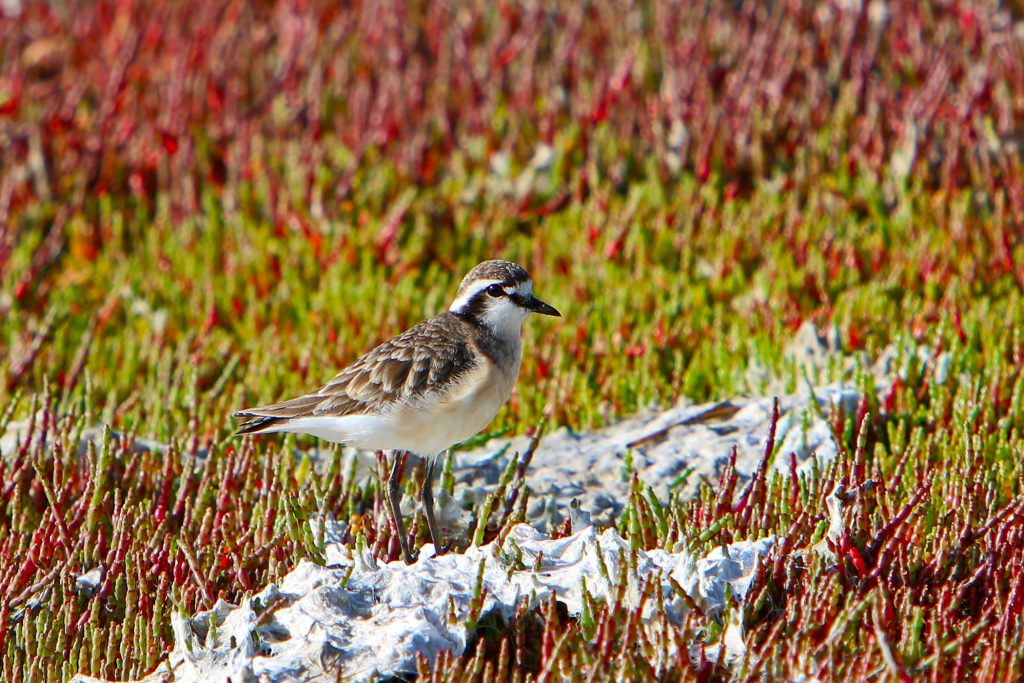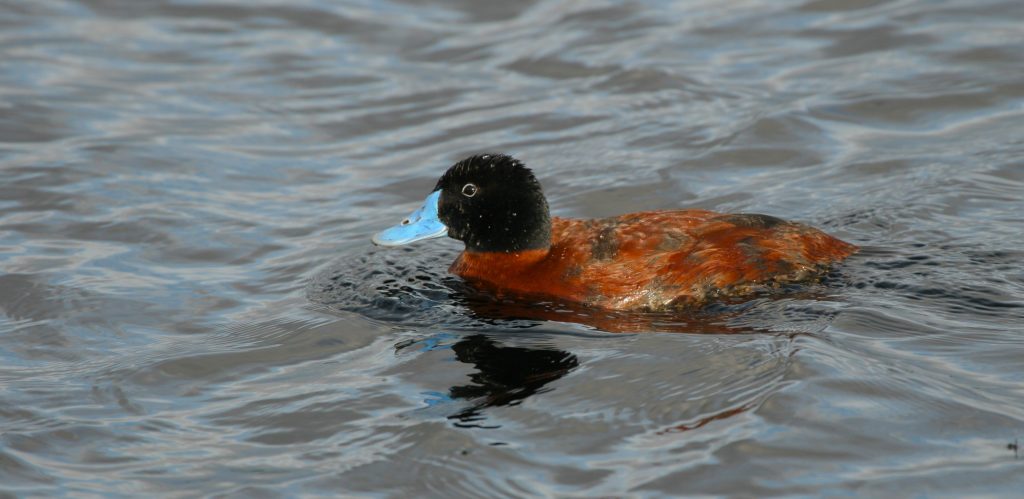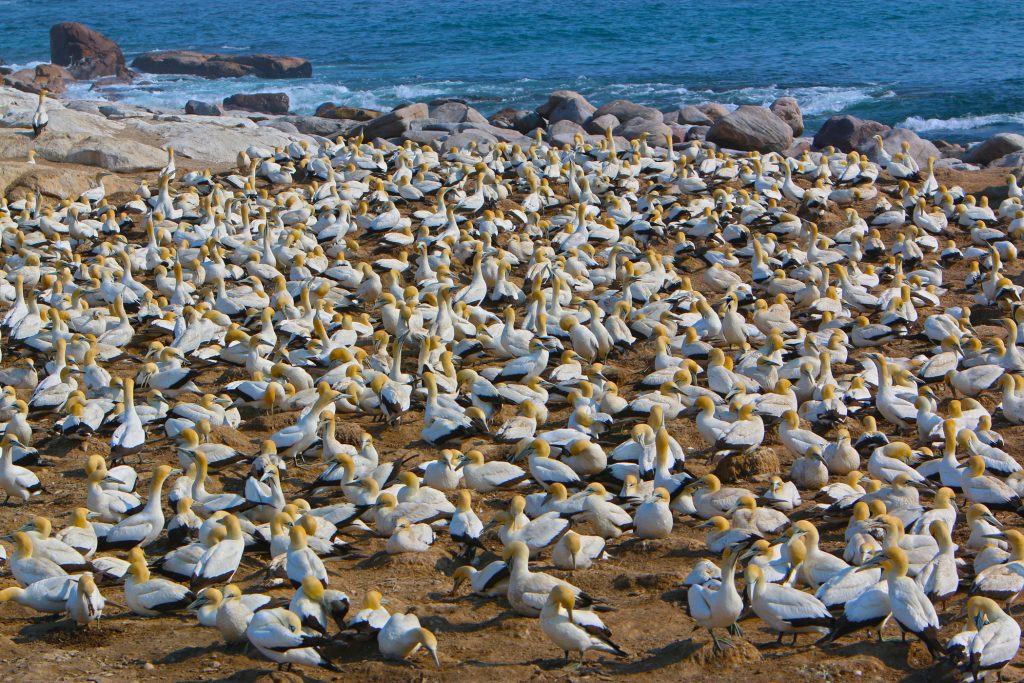Cape Town & Western Cape District Itinerary
Cape Town & Western Cape District Itinerary
| Intro | Itinerary | Tour Pricing and Information | Gallery | Birdlist | Registration |
September 1: Arrive in Cape Town from Johannesburg. Group members arrive in Cape Town in the early evening hours via domestic flight from Johannesburg. We’ll pick up our van, transfer to our private home for the next week and then try to get a good night’s sleep. Night Strand.
September 2: Kirstenbosch Botanical Garden, Strandfontein. After breakfast, we’ll begin our exploration of the picturesque Cape Peninsula at one of region’s most scenic hotspots—Kirstenbosch Botanical Gardens. Kirstenbosch lies along the slopes of Table Mountain and is home to one of the world’s most impressive wildflower displays. It also holds a plethora of avian endemics restricted to the Macchia-like vegetation of the Southern tip of Africa. Resident birds here are accustomed to people walking about so many birds offer spectacularly close views. Highlights include: Cape Francolins scurrying across manicured lawns; magnificent Protea gardens sheltering spectacular Cape Sugarbirds and Orange-breasted Sunbirds, while Cape Bulbul, Olive Thrush, attractive Cape Grassbird, Karoo Prinia, striking Bokmakierie, Southern Boubou and brilliant Southern Double-collared Sunbird may be found in areas of denser cover. Indigenous forest cloaks the slopes above the gardens and we’ll criss-cross trails here in search of such specialties as Rufous-chested Sparrowhawk, Rameron Pigeon, Lemon Dove, the highly elusive Knysna Scrub-Warbler, Cape Batis and Forest Canary. After lunch, we’ll visit a series of fresh water pans near our hotel. Ordinarily they team with waterfowl, and we should see Greater Flamingo, Spur-winged and Egyptian Goose, Cape Teal, Maccoa Duck, Southern Pochard, Cape Shoveler and Great Crested and Eared Grebe. Other species may include Purple Heron, Black-crowned Night-Heron, Sacred and Glossy Ibis. These wetlands hold an impressively large number of birds with an equally high diversity of species that will lengthen our checklist significantly! Night Strand.
September 3: Rooi Els, Betty’s Bay, Harold Porter Botanical Garden, Stoney Point. A diverse array of birding habitats are present around Cape Town and today we will visit a variety of sites ranging from forests to wetlands, fynbos to marine shoreline. We commence at dawn below the rugged Hottentot-Holland Mountains, in search of one of South Africa’s finest endemics: the handsome Cape Rockjumper. Though superbly plumaged and conspicuous by their vocalizations, these charismatic birds possess an incredible ability to disappear amongst the boulders and we may have to be patient if we wish to enjoy long sightings of these elusive creatures. Rock outcrops here also support Ground Woodpecker, White-necked Raven, Cape Rock-Thrush, Familiar Chat and Long-billed Pipit, while the thick mountain Fynbos is the favored habitat of Orange-breasted Sunbird, Cape Siskin and the beautiful, endemic Victorin’s Scrub-Warbler. If we are very lucky, we may flush a Hottentot Buttonquail underfoot or stumble upon a Cape Eagle-Owl at its daytime roost. Chacma Baboon are fairly common here but we will have to scan the rocky ridges carefully to find the agile Klipspringer. The compact Harold Porter Botanical Garden offers a tranquil setting to wander about searching for birds of the beautiful fynbos draped across its hillsides and ravines. We’ll search for such specialties as Swee Waxbill, Bully and Yellow Canaries, striking Yellow-rumped Widows, graceful Black Saw-wings cutting through the canyons with Rock Martins close behind. A good collection of birds can be found in the forest patches and Cape Batis, Paradise and Dusky Flycatchers and African Black Duck are often found along the riverside trails. We’ll enjoy lunch at the gardens, or a nearby favorite, thus continuing our delicious morning. The African Penguin colony covering the Stoney Point Reserve is also home to a large number of breeding cormorants. Among the more common Crowned, Cape and White-breasted we’ll find the more uncommon Bank Cormorant. A loud, smelly and action packed extravaganza of displaying, breeding and loafing birds. Night Strand.
September 4: Sir Lowry’s Pass to Overberg, De Hoop, Cape Agulhas & Bredasdorp areas. A full day exploring undulating agricultural fields where large groups of Blue Cranes are possible (the national bird of South Africa.) Photo opportunities abound and we’ll search for specialties like Agulhas Long-billed Lark, Stanley’s Bustard, Southern Black and Karoo Korhaans, Gray-winged Francolin, Knysna Woodpecker reaches the western most limits of its range here, Long-billed Pipit and there are usually a few surprises that pop up. Another interesting experience will be our crossing of the Breede River on the Malgas ferry, the last working man-powered ferry in South Africa. Night Strand.
September 5: Pelagic trip off of Cape Town. We hope to see Shy, Black-browed and Yellow-nosed Albatross (Indian and Atlantic), Southern and Northern Giant-Petrels, White-chinned, Pintado and Soft-plumaged Petrels, Sooty and Great Shearwater, Wilson’s Storm-Petrel, Cape Gannet and Subantarctic Skua. If we manage to locate one of the usually present commercial fishing trawlers, the birding can be truly spectacular, with clouds of seabirds following in the wake of the vessel feeding off the fish scraps. Once the excitement has subsided, we will carefully search through the thousands of birds present for rarities such as Wandering and Gray-headed Albatross and Soft-plumaged or Spectacled Petrel. Cetaceans are almost always encountered and we have a good chance of seeing Southern Right and Bryde’s Whale and Dusky Dolphin. It goes without saying that a day off the Cape is likely to be a highlight of any trip to South Africa. Night Strand.
September 6: Open itinerary. Today’s itinerary is kept open to allow us to take advantage of local weather conditions and our group’s interests other than birding, wildlife and photography. In past years we’ve had an early morning outing to enjoy what the day offers with the balance of our time spent exploring other delights of Cape Town and the Western Cape. We could visit the picturesque village of Hermanus for a whale watching trip or to view Southern Right Whales from shore, visit one of the local wineries (South Africa’s wines are world class and there are MANY options!), travel to the top of Table Mountain via its famous Aerial Cableway or explore portions of historic Cape Town new to our group. Possibilities are boundless and limited only by our time, energy and weather conditions. Night Strand.
September 7: Cape of Good Hope National Park, Boulder’s Beach. The Cape of Good Hope Nature Reserve protects the stark, rugged scenery at the very Southwestern tip of the continent. We’ll travel the reserve’s back roads in search of the magnificent Black Harrier, surely one of the world’s most attractive raptors. Other possibilities include Gray-winged Francolin, Cape Grassbird and Cape Siskin amongst many others. Several large mammals roam the plains and we should find Eland, Bontebok and Chacma Baboon. While in False Bay we will also visit the famous African (Jackass) Penguin colony, watch for striking—and endangered—endemic African Oystercatchers along rocky shorelines and scan offshore islets for breeding populations of Crowned, Bank and Cape Cormorants. Night Strand.
September 8: Silwerstroomstrand, Darling, West Coast National Park and Reitvlei Reserve. Silwerstroomstrand is the nearest choice strandveld (low, scrubby vegetation overlaying sand dunes or wind-blown sandy soils) birding site to Cape Town. Ablaze with color during the famous wild flower season of early spring, we are likely to find some fine examples of this area’s spectacular flower displays. In fact, two flower reserves we plan to visit offer access to a couple of special birds as well! Black-shouldered and Yellow-billed Kites, Pied Crow and Fiscal Shrike are likely to be seen as we drive. Exiting the highway, we’ll begin to find the many avian stars of this unique habitat. Endemic Southern Black Korhaan, White-backed Mousebird, Karoo, Cape Long-billed and Cape Clapper Larks, Capped Wheatear, the well-marked Southwestern race of Cloud Cisticola and ubiquitous Cape Bunting sing from decidedly odd-looking restios patches. The agricultural fields and wildflower reserves surrounding the quaint village of Darling we’ll search for beauties like Secretarybird, Familiar Chat, Pin-tailed Whydah, Acacia Pied Barbet, all three species of mousebirds, a nice collection of swallows and martins and grassland residents like Orange-throated Longclaw, Thick-billed and Red-capped Larks, Grassveld Pipit and striking Blue Cranes.
In West Coast National Park, large numbers of waders spend the northern winter here and we’ll search for the likes of Red Knot, Bar-tailed Godwit and Eurasian Curlew, as well as Kittlitz’s and the very local Chestnut-banded Plover. In addition to shorebirds, these areas also support large numbers of Greater and Lesser Flamingo, South African Shelduck, Cape Shoveler and other waterfowl. Ostriches can be found striding across the expansive strandveld, and raptors and grassland species are well represented. We’ll enjoy lunch at the historic Geelbek Manor underneath trees filled with Cape Weavers. Night Langebaan.
September 9: West Coast National Park to Lambert’s Bay. After enjoying a field breakfast we’ll explore more fully the wonders of the West Coast National Park. Waders and waterbirds occupy much of our attention today as we visit globally important wetland sites like the Berg River estuary, Langebaan Lagoon and Veldriff. As we travel northward toward Lambert’s Bay, we’ll make a late afternoon stop at Rocher Pan. This ephemeral wetland has several hides that often provide point blank views of striking African Spoonbill, Maccoa Duck, Black Crake and African Rail. Little-brown-jobs aren’t neglected either as Lesser Swamp and Little Rush Warblers occupy reed beds bordering the wetlands and neighboring Sandveld habitat holds Karoo Prinia, Namaqua Warbler and Rufous-eared Warbler. Night Lambert’s Bay.
September 10: Lambert’s Bay to Cape Town. Sunrise finds us exploring expanses of desolate Strandveld and extensive Coastal Fynbos surrounding Lambert’s Bay. Specialty targets include Karoo and Cape Clapper Larks, both of which should be performing their aerial flight song displays. Other species here might include Karoo Scrub Robin, Karoo Prinia, Gray-backed Cisticola, Cape Penduline Tit and Bar-throated Apalis. After breakfast at the historic Lambert’s Bay Hotel, a short walk brings us to the region’s famous Cape Gannet colony. Teeming with thousands of birds well into their breeding season, the sight, the sound, and, it must be said, smell of all those birds packed together is unforgettable. We should also find Cape and Crowned Cormorants jostling for space among the gannet throng, and we’ll watch Cape Fur Seals basking on the rocks. In the afternoon, we’ll return to Cape Town with stops for several specialties planned. Foremost would be our visit to an isolated Protea woodland to search for the erratic and uncommon Protea Canary or White-winged Seedeater and nesting Verreaux’s Eagles on towering cliffs. We’ll arrive back in Cape Town in the late afternoon where we have a couple of Day Rooms reserved at a delightful property near the airport. This will allow us to shower, change clothes, repack and enjoy a final dinner together as we relive our grand South African Adventure before transferring to the airport and our flights home.
| Intro | Itinerary | Tour Pricing and Information | Gallery | Birdlist | Registration |

